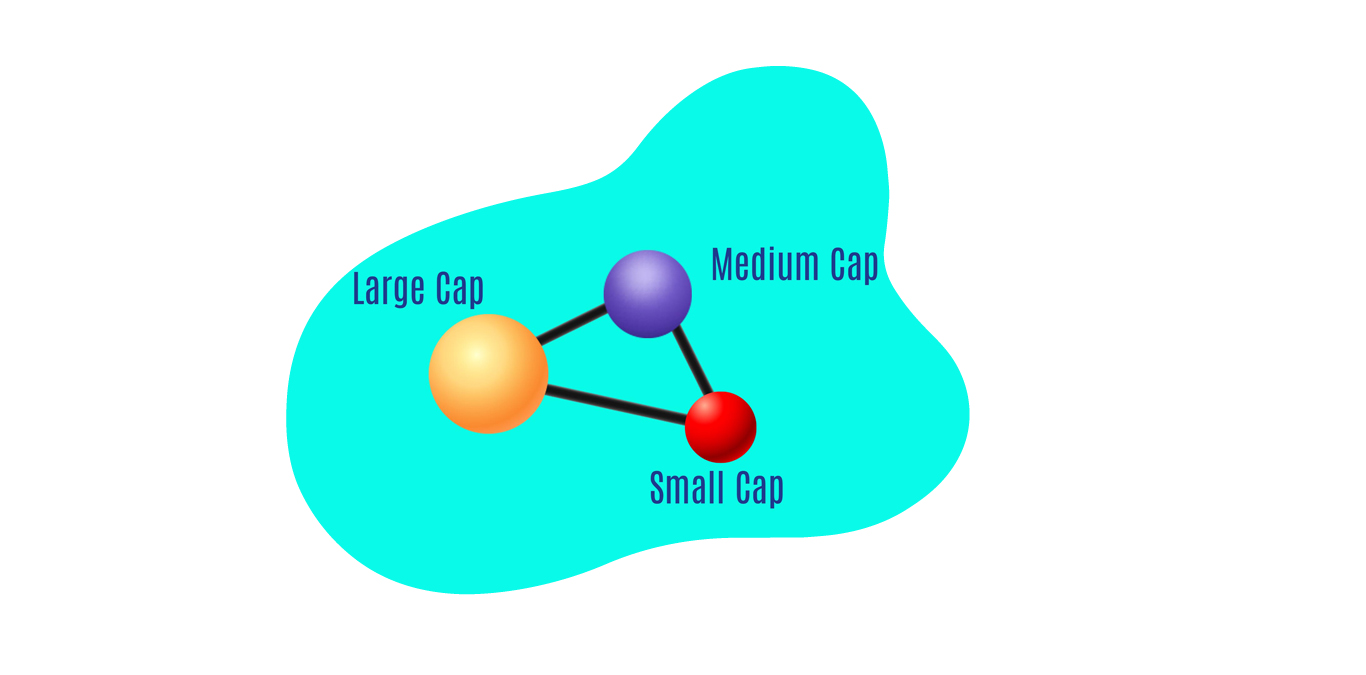Are you wondering where to invest when the markets correct? Should you invest in large-cap, mid-cap, or small-cap? Not just newbies but seasoned investors also stumble upon this question often when the markets take a reverse gear.
While this is true that one must have a multi-cap portfolio and that’s what we also do at Research & Ranking, we think you could invest in large caps, when the markets correct.
Read the article to find out how.
But before that let’s define Market Capitalization, Small cap, Mid-cap, and Large-cap.
Market Capitalization
There are thousands of companies listed on the stock markets. So how does one categorize them? Here’s how market capitalization is calculated. The stocks are classified based on their market capitalization alias Market Cap. There are three caps – large-cap, mid-cap, and small cap. Market capitalization is a dynamic figure, which changes every second.
You can calculate it using the formula below-
Market Cap = No. of outstanding shares X Share price
Large Cap
Large-cap stocks are well-established companies with a significant market share in a particular industry. These companies have a market cap of Rs. 20,000 crore or more. HDFC Bank Ltd., Tata Consultancy Services (TCS) Ltd., Hindustan Unilever Ltd. (HUL), etc. are some examples of large-cap companies in India.
Mid Cap
Mid-cap stocks’ market capitalization ranges between Rs. 5,000 to Rs. 20,000 crore. Investment in these companies is riskier compared to that of large-cap companies. However, mid-caps tend to offer higher returns than large caps. Amar Raja Batteries, Polycab India, Relaxo footwear, etc. are some examples of mid-cap companies in India.
Small-Cap
Companies with a market capitalization of less than Rs. 5,000 crore, are considered small-cap. These are budding companies with a fraction of the market share in a particular industry. Though small caps offer immense potential to generate higher returns, what makes them risky is the low probability of them being successful over time.
Data suggests that small-cap companies have a history of underperformance, however, these stocks tend to outperform when an economy emerges out of recession. Indian Energy Exchange, Nesco Ltd., Inox Leisure Ltd., etc. are some small-cap companies listed on the stock exchange that grew after the market fell in the pandemic.
Why large caps are reliable?
They offer stability
The greatest plus point of investing in large caps in a volatile market is the company’s stability. As we mentioned in the definition above, these are well-established companies with a significant market share in the industry they represent. In fact, they are market leaders in the industry. Look at HUL and TCS for instance.
Large caps are less likely to be impacted by economic changes, meaning the probability of becoming insolvent or revenue-producing operations ending is close to zero.
We are not saying that these companies won’t fall when the markets correct but the fall won’t be severe. If a mid-cap falls 30% during a correction, the large-cap may correct 10-12%. Moreover, large-cap companies offer a beta value of 1, i.e. they move in relation to the index. If the stock market falls 2%, a large-cap will fall only ~2%.
They offer consistent returns
Another merit of investing in Large-caps is these companies tend to offer consistent returns over the long term. Look at HDFC Bank Ltd. for instance. Over the past decade, the bank’s share price has compounded at a growth rate of ~21%.
Large caps also offer steady dividend payouts. These dividends can result in impressive returns when you add them to the overall performance calculation over time.
Role of liquidity
Here liquidity does not refer to money but the volume of shares. As you read in the formula above, the number of outstanding shares is one factor used to calculate the market cap. The outstanding shares mean the number of shares in circulation at a given moment.
Large-cap companies offer liquidity aplenty vis-à-vis mid-cap and small cap. Thus, the share prices of large-cap companies don’t move drastically in the short term.
You must turn to well established large caps in the time of crisis instead of not investing altogether. Does this mean, you must sell your shares of the mid-cap and small-cap companies? NO! Given that you have picked fundamentally robust companies.
Want to find a fundamentally solid company from each cap?
At Research & Ranking, we build a multi-cap portfolio based on your risk appetite. The portfolio consists of companies with strong fundamentals i.e. consistent growth in top and bottom line, economic moat, strong management leading the company and a lot more. To invest with confidence in equities, subscribe to our 5 in 5 Wealth Creation Strategy and start your wealth creation journey with us.
Disclaimer*
The information and the stocks mentioned in the article are just for information purposes only. A reader/investor/trader should not consider it a buy/sell/hold recommendation from Research & Ranking
Read more: How Long-term investing helps create life-changing wealth – TOI.
How useful was this post?
Click on a star to rate it!
Average rating 0 / 5. Vote count: 0
No votes so far! Be the first to rate this post.
I’m Vinay Mahindrakar, an experienced content creator with
an affinity for writing on personal finance and other financial content. I
love to write on equity investing, retirement, managing money, and more.
-
Vinay Mahindrakarhttps://www.equentis.com/blog/author/vinay/
-
Vinay Mahindrakarhttps://www.equentis.com/blog/author/vinay/
-
Vinay Mahindrakarhttps://www.equentis.com/blog/author/vinay/
-
Vinay Mahindrakarhttps://www.equentis.com/blog/author/vinay/



